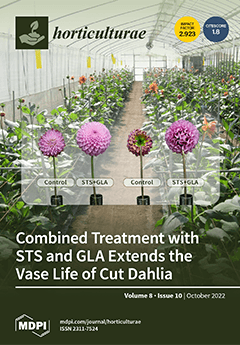Moringa (
Moringa oleifera Lam.) is a fast-growing tree that can reach a height of 3 m when left to grow naturally. Cutting-back management can enhance lateral branching, water use efficiency, regrowth, and leaf biomass production. Although
M. oleifera can thrive in diverse ecological environments, including areas with high temperatures and drought where most crops cannot survive, the prevailing agro-ecological conditions can influence the tree’s response to cut-back and nutritional composition. An observation trial on the re-sprouting of
M. oleifera after cutting back was conducted in three agro-ecological zones, including arid, semi-arid, and dry sub-humid regions. The soil analysis from the three agro-ecological zones showed variations, with the soil collected from the arid area recording the highest clay content (24.4%), nitrogen (8.14%), and phosphorus (168.2 mg/kg). The nutritional composition of the
M. oleifera leaves in response to the cutting back was assessed. The trees planted in the arid region responded well to the cutting back by producing considerable new vegetative growth in the spring (13.4 sprouts averaging 21.50 cm in length) compared to semi-arid and dry sub-humid regions. The region’s climatic conditions favoured
M. oleifera re-sprouting, and the stems did not die after cutting back. During the winter, the stems die back, sprout from the root collar area during more favourable weather conditions, and take longer to reach the harvestable stage. The leaves of
M. oleifera harvested from the arid and dry sub-humid regions exhibited increased total fat, magnesium, sodium, phosphorus, potassium, and zinc content when compared to the semi-arid agro-ecological zone. In contrast, the calcium content of the leaves was higher in the semi-arid region than in the other agro-ecological zones. The influence of cutting back
M. oleifera trees on biomass production and quality in varying agro-ecological zones requires further investigation to ensure that smallholder farmers use appropriate crop management practices in those regions for long-term, economically viable tree production.
Full article





